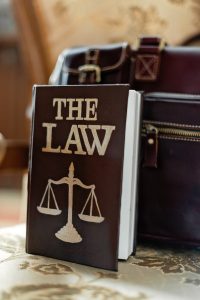Copyright or wrong? Important issues that writers need to consider.
Sharon Givoni Consulting Internet Law
For writers, copyright law can play a significant role in protecting their original works and ensuring they receive appropriate recognition and compensation for their efforts.
Under Australian copyright law, copyright protects the original expression of ideas, rather than the ideas themselves. This means that while ideas themselves cannot be copyrighted, the particular way in which they are expressed can be protected. For example, if two writers were to write books about a dystopian society, each author’s work would be protected by copyright, even though they are both exploring similar ideas.
When it comes to writing, copyright law protects a range of elements, including the text of a work, characters, plot, dialogue and other creative elements. This means that writers must be careful to ensure that they are not infringing on the copyright of others by using similar characters, plot points or other elements from existing works.

What is protected – ideas or the expression of ideas?
It is a well-known concept that copyright does not protect ideas but only the expression of ideas.
What does this mean in practice?
In practice, the concept that copyright does not protect ideas but only the expression of ideas means that while an author’s specific words, sentences, and paragraphs are protected by copyright, the underlying ideas, concepts, or themes expressed in a work are not.
For example, if two writers both write stories about a group of survivors after a zombie apocalypse, each writer’s particular expression of that idea – the specific characters, settings, plot twists, and dialogue – would be protected by copyright. However, the underlying idea of a zombie apocalypse and a group of survivors is not protected by copyright, and other writers are free to use that idea in their own work.
This distinction is important because it allows for a balance between the protection of creativity and the promotion of innovation and the exchange of ideas.
The idea is that it encourages authors to create new and original works, while also allowing others to draw inspiration from those works and create their own original works.
However, it is important to note that this distinction is not always clear-cut. There may be cases where the line between an idea and its expression is blurred. In such cases, the courts will look at a number of factors.
These factors include: the specific facts of the case and consider various factors, such as the level of originality in the expression, the similarity between the works, and the degree of access the accused infringer had to the original work, to determine whether copyright infringement has occurred.

Cases on point
One example of copyright law in action in Australia is the case of The Da Vinci Code. In 2006, authors Richard Leigh and Michael Baigent sued Dan Brown, author of The Da Vinci Code, alleging that he had plagiarised their book, The Holy Grail. The case was dismissed, with the judge ruling that while there were similarities between the two works, the similarities were in the ideas explored, rather than the expression of those ideas.

Conclusion
In conclusion, copyright law in Australia plays an important role in protecting the original expression of ideas for writers.
While ideas themselves cannot be copyrighted, writers must be careful to ensure that they are not infringing on the copyright of others by using similar characters, plot points or other creative elements from existing works.
As demonstrated by the case studies above, copyright law is actively enforced in Australia, and writers should be aware of their rights and obligations under the law.
Copyright tips for writers
- Understand the basics of copyright law: Learn what rights it gives you as a writer.
- Create original works: Ensure that your work is original and not copied from someone else’s work. This will prevent any claims of copyright infringement.
- Keep a record of your work: Keep a record of your original work, including the date of creation and any subsequent revisions. This can help in proving ownership and authorship in case of any disputes.
- Use copyright notices: Use copyright notices on your work to indicate that you are the owner of the copyright. This is not foolproof but it helps.
- Obtain permissions: Obtain permissions from copyright owners before using their work in your own work – including long quotes.
- Keep copies of permissions and licenses: Keep copies of any permissions and licenses you obtain, as they can be used as evidence in case of any disputes.
- Monitor your work: Monitor the use of your work to ensure that no one is infringing on your copyright.
- Seek legal advice: Seek legal advice if you are unsure about your rights or if you think your copyright has been infringed upon.
Don’t forget: The contents of this article are not to be relied upon as a substitute for tailored legal advice.
Another notable case involving copyright in Australia was a 2012 case in which a magazine publisher was found to have infringed the copyright of another magazine by reproducing a substantial part of a feature article without permission.
About the writer
Sharon Givoni has been practising in copyright law for over 23 years and has advised ghost-writers, journalists, book authors, educational institutions, lecturers and publishers. To get assistance with your copyright needs contact her on: info@iplegal.com.au or call her on 0410 557 907. Her website is located at: www.sharongivoni.com.au and www.owningit.com.au
Please note the above article is general in nature and does not constitute legal advice.
This article was written by Sharon Givoni, Principal Solicitor at the law firm Sharon Givoni Consulting (https://www.sharongivoni.com.au/). We do a lot of work in the area of interior design and understand the industry.
Please email us info@iplegal.com.au if you need legal advice about your brand or another legal matter in this area generally.
